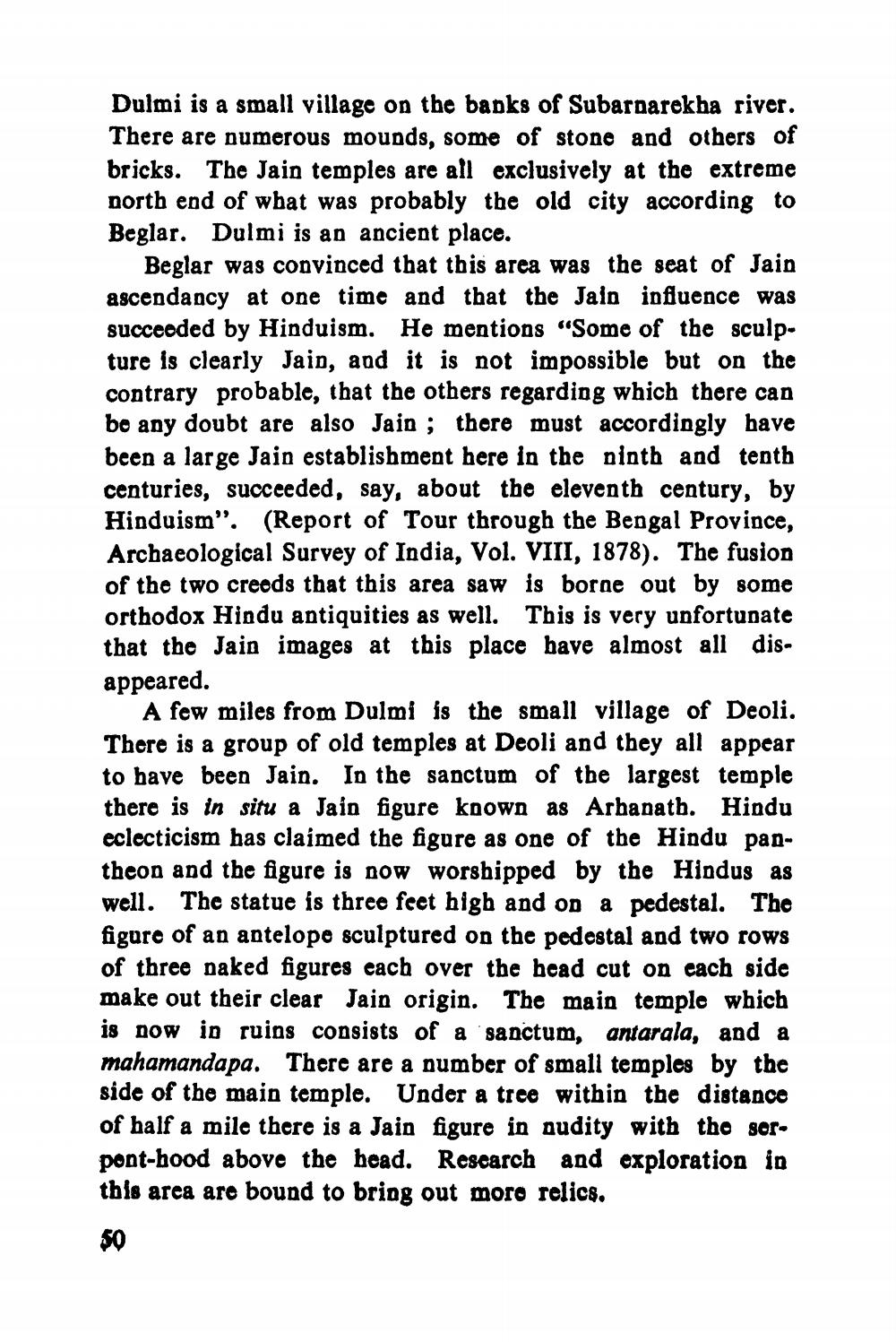________________
Dulmi is a small village on the banks of Subarnarekha river. There are numerous mounds, some of stone and others of bricks. The Jain temples are all exclusively at the extreme north end of what was probably the old city according to Beglar. Dulmi is an ancient place.
Beglar was convinced that this area was the seat of Jain ascendancy at one time and that the Jala influence was succeeded by Hinduism. He mentions "Some of the sculpture is clearly Jain, and it is not impossible but on the contrary probable, that the others regarding which there can be any doubt are also Jain ; there must accordingly have been a large Jain establishment here in the ninth and tenth centuries, succeeded, say, about the eleventh century, by Hinduism". (Report of Tour through the Bengal Province, Archaeological Survey of India, Vol. VIII, 1878). The fusion of the two creeds that this area saw is borne out by some orthodox Hindu antiquities as well. This is very unfortunate that the Jain images at this place have almost all disappeared.
A few miles from Dulmi is the small village of Deoli. There is a group of old temples at Deoli and they all appear to have been Jain. In the sanctum of the largest temple there is in situ a Jain figure koown as Arhanath. Hindu eclecticism has claimed the figure as one of the Hindu pantheon and the figure is now worshipped by the Hindus as well. The statue is three feet high and on a pedestal. The figure of an antelope sculptured on the pedestal and two rows of three naked figures each over the head cut on each side make out their clear Jain origin. The main temple which is now in ruins consists of a sanctum, antarala, and a mahamandapa. There are a number of small temples by the side of the main temple. Under a tree within the distance of half a mile there is a Jain figure in nudity with the sorpont-hood above the head. Research and exploration in this area are bound to bring out moro relics. 50




